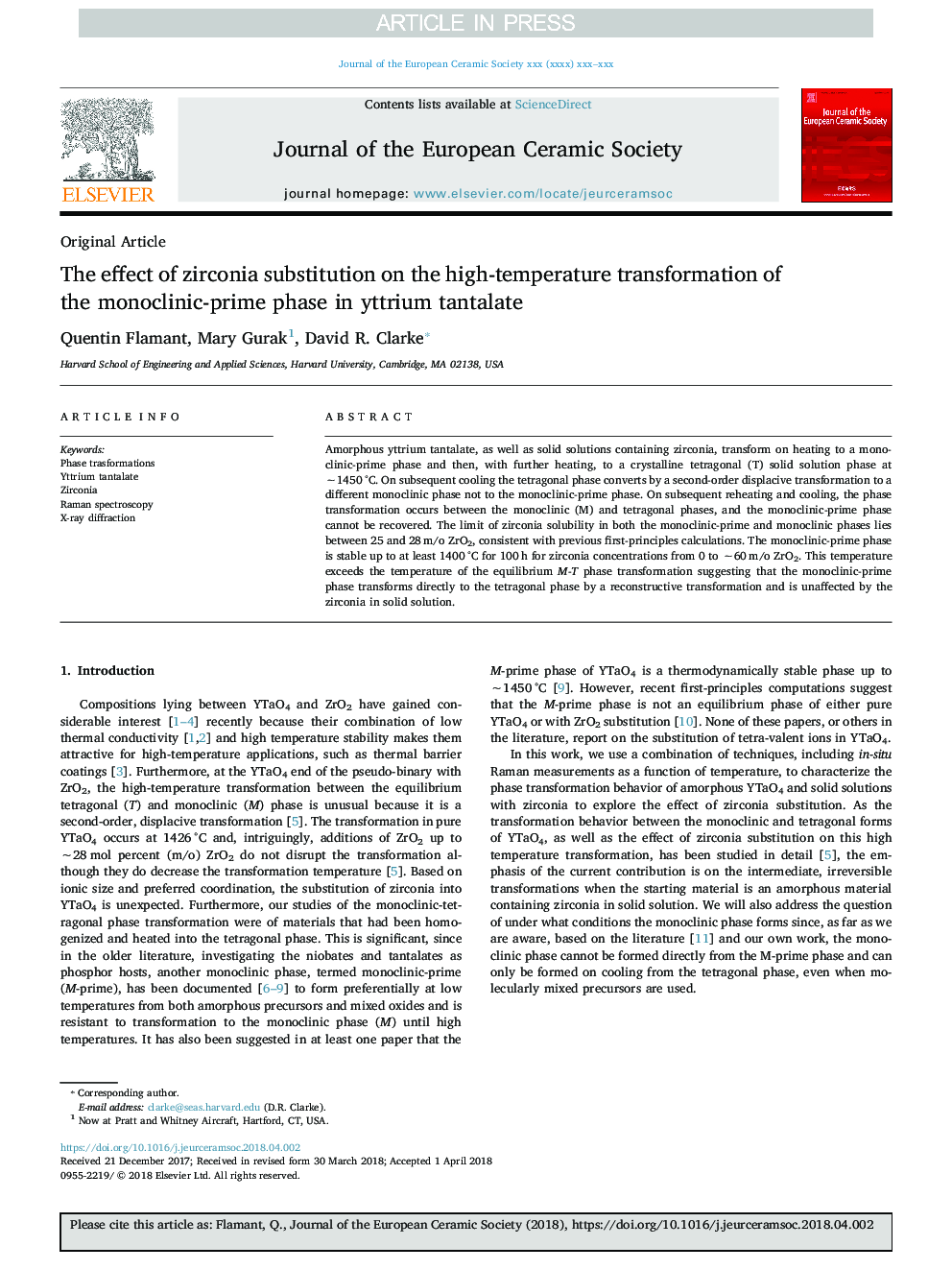| Article ID | Journal | Published Year | Pages | File Type |
|---|---|---|---|---|
| 7897978 | Journal of the European Ceramic Society | 2018 | 7 Pages |
Abstract
Amorphous yttrium tantalate, as well as solid solutions containing zirconia, transform on heating to a monoclinic-prime phase and then, with further heating, to a crystalline tetragonal (T) solid solution phase at â¼1450â¯Â°C. On subsequent cooling the tetragonal phase converts by a second-order displacive transformation to a different monoclinic phase not to the monoclinic-prime phase. On subsequent reheating and cooling, the phase transformation occurs between the monoclinic (M) and tetragonal phases, and the monoclinic-prime phase cannot be recovered. The limit of zirconia solubility in both the monoclinic-prime and monoclinic phases lies between 25 and 28â¯m/o ZrO2, consistent with previous first-principles calculations. The monoclinic-prime phase is stable up to at least 1400â¯Â°C for 100â¯h for zirconia concentrations from 0 to â¼60â¯m/o ZrO2. This temperature exceeds the temperature of the equilibrium M-T phase transformation suggesting that the monoclinic-prime phase transforms directly to the tetragonal phase by a reconstructive transformation and is unaffected by the zirconia in solid solution.
Related Topics
Physical Sciences and Engineering
Materials Science
Ceramics and Composites
Authors
Quentin Flamant, Mary Gurak, David R. Clarke,
